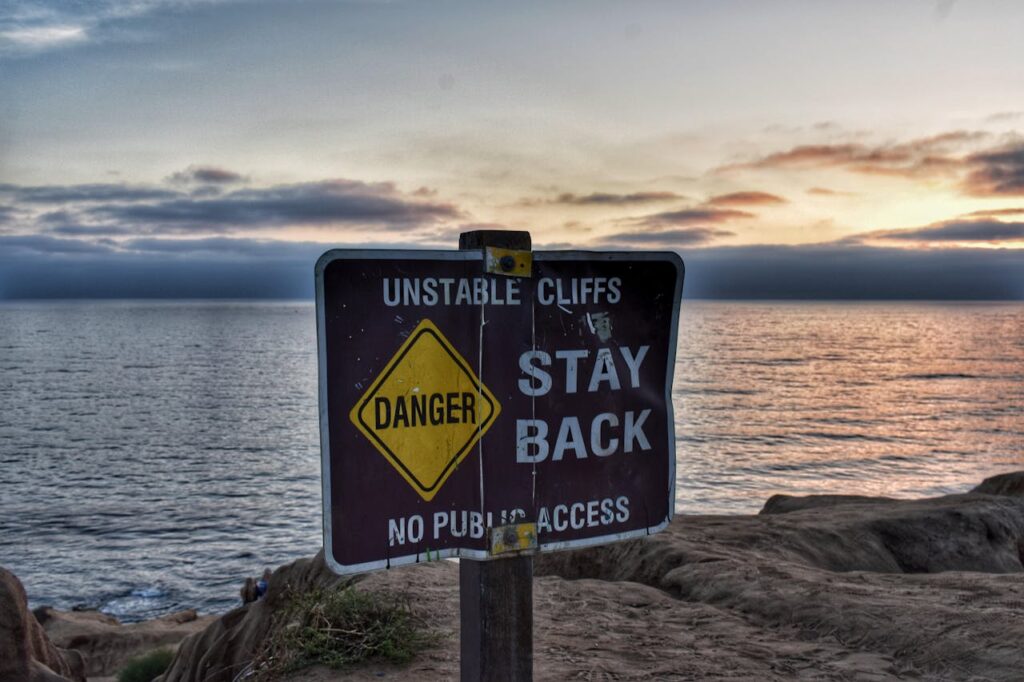
Explore & Play
Discover interesting topics and solve the accompanying crossword puzzle.
Danger Crossword | Survival strategies and how to stay safe from dangers
Table of Contents
Danger Crossword
You can either fill in the crossword puzzle directly on this page or click the button in the bottom right corner to print it for free.

Surviving Extreme Conditions: How to Protect Yourself from Natural and Man-Made Dangers
Surviving extreme conditions requires more than just basic survival skills—it demands knowledge, preparedness, and the right mindset to handle both natural and man-made dangers. Natural disasters like floods and wildfires, along with industrial accidents and toxic exposure, can strike unexpectedly. Knowing how to prepare for and respond to these emergencies is key to protecting yourself and those around you. In this article, we’ll explore various types of danger, discuss prevention strategies, and share valuable survival tips. By the end, you’ll not only understand the importance of preparedness but also be ready to take action if a crisis arises.
If you enjoy challenges, make sure to check out our crossword puzzle on the topic of “Danger,” where you can test your knowledge of hazardous situations and protective strategies.
Understanding the Nature of Danger
What is Danger?
Before diving into specific dangers, it’s important to define what danger is. Danger refers to a state of risk or harm, which can stem from various sources. Whether it’s a natural phenomenon or a man-made occurrence, the essence of danger lies in its potential to cause harm, destruction, or even death.
There are two primary categories of danger: natural and man-made. Natural dangers include wildfires, earthquakes, and epidemics, which arise from forces of nature. Man-made dangers, on the other hand, are the result of human activity, such as toxic waste spills, industrial accidents, and even terrorism. Recognizing these risks is the first step in mitigating them and ensuring your safety.
Natural vs. Man-Made Dangers
Natural dangers tend to be unpredictable and difficult to control. Wildfires, floods, and earthquakes often strike with little warning, leaving communities scrambling for shelter and safety. On the other hand, man-made dangers—such as toxic waste contamination, industrial accidents, and power outages—are often preventable or at least predictable through the use of technology and regulations.
Understanding the distinction between these two types of danger helps you approach each situation differently. For example, you may have more control over man-made dangers through preparedness and safety measures, while natural disasters often require swift action and adaptation.
Natural Dangers and How to Stay Safe
Wildfires and Floods
Natural disasters like wildfires and floods are devastating events that often leave widespread damage in their wake. Wildfires, which can spread quickly through dry vegetation, are particularly dangerous in regions prone to heatwaves and droughts. Floods, on the other hand, occur when rivers, lakes, or rainfall overwhelm their banks, submerging entire areas.
To stay safe during a wildfire, always follow evacuation instructions from local authorities. Avoid driving on roads that are at risk of being engulfed by flames and find shelter in designated safe zones. Equip your home with fire-resistant materials and create a defensible space by clearing vegetation around your property.
For floods, it’s crucial to stay informed by monitoring weather forecasts and flood warnings. If you live in a flood-prone area, elevate your home’s foundation, install sump pumps, and have an emergency evacuation plan in place. Remember, during a flood, avoid driving through flooded roads—turn around and find an alternate route.
Earthquakes and Landslides
Earthquakes and landslides represent another category of natural dangers that can strike without warning. Earthquakes are caused by the shifting of tectonic plates beneath the Earth’s surface. They can trigger landslides, sinkholes, and aftershocks, causing widespread damage.
To protect yourself during an earthquake, “Drop, Cover, and Hold On” until the shaking stops. Stay indoors and avoid standing near windows or heavy objects that could fall. Once the shaking ceases, be cautious of aftershocks and potential hazards like broken glass and downed power lines.
Landslides often occur after earthquakes, heavy rain, or volcanic activity. If you live in an area prone to landslides, stay alert during severe weather and move to higher ground if you notice any signs of instability, such as soil movement or cracks in the earth.
Epidemics and Pandemics
Epidemics, like the outbreak of infectious diseases, and pandemics, which spread globally, pose significant risks to public health. Contagious diseases, such as viruses and bacteria, can spread quickly, particularly in crowded or unhygienic conditions.
Preventing infection during an epidemic or pandemic requires maintaining good hygiene, avoiding close contact with infected individuals, and wearing protective equipment like masks. During a public health crisis, always stay informed through credible sources, follow local health guidelines, and take proactive steps to prevent the spread of disease.
Man-Made Dangers and Their Impact
Chemical and Toxic Hazards
Man-made dangers, such as chemical spills, radiation exposure, and industrial accidents, can have devastating consequences for both individuals and the environment. Toxic substances, such as hazardous waste, can contaminate water sources and pose severe health risks if inhaled or ingested.
To protect yourself from chemical hazards, familiarize yourself with the risks in your area, especially if you live near industrial plants or chemical storage sites. If a chemical spill occurs, evacuate the area immediately and follow emergency response instructions. For radiation exposure, seek shelter in a basement or any enclosed space to reduce your exposure to harmful particles.
Technological Risks: Power Outages and Failures
With our growing reliance on technology, power outages and technological failures have become more common—and more disruptive. Whether it’s a blackout caused by a storm or a cyberattack targeting critical infrastructure, the potential consequences of technological failures can be severe.
To stay safe during a power outage, have backup power sources, such as a generator, and store essential supplies like batteries, water, and non-perishable food. It’s also a good idea to invest in surge protectors to safeguard electronics from sudden power fluctuations.
Crime and Terrorism
In addition to environmental and technological dangers, man-made risks like crime and terrorism remain a serious threat to public safety. These threats can take many forms, from violent crimes to organized attacks aimed at instilling fear.
To protect yourself from crime, always be aware of your surroundings, especially in unfamiliar or high-risk areas. If you’re traveling, keep your valuables secure and avoid walking alone at night. In the case of a terrorist attack, remain calm, follow emergency instructions, and take shelter as needed.
Strategies for Survival in Extreme Conditions
Mental Preparedness
Surviving extreme conditions is not just about having the right gear—it’s about maintaining a calm and resilient mindset. Mental preparedness is key to staying focused during a crisis, whether it’s a natural disaster or a man-made emergency. The ability to think clearly and act decisively can mean the difference between life and death.
Building mental toughness involves practicing stress-management techniques, such as deep breathing and visualization. It’s also helpful to stay physically fit, as a strong body supports a strong mind during difficult situations.
Emergency Kits and Essential Gear
One of the most important aspects of survival is being prepared with the right gear. An emergency kit should include first-aid supplies, a flashlight, a multi-tool, a portable charger, and enough food and water to last at least 72 hours. You should also pack clothes suitable for the weather conditions, blankets, and a whistle to signal for help.
When it comes to protecting yourself from specific dangers, having appropriate gear is essential. If you’re in an area prone to toxic contamination, wear protective clothing, gloves, and a face mask. For natural disasters like earthquakes and floods, make sure to have sturdy shoes and a flashlight with extra batteries.
Navigating Dangerous Environments
Navigating through hazardous environments, whether it’s a wildfire zone, a flood-prone area, or an industrial site, requires situational awareness and quick decision-making. Always stay informed about the risks in your area and be ready to act when necessary.
For example, if you’re caught in a wildfire, follow evacuation routes and avoid trying to outrun the flames. If you’re in an industrial zone with hazardous materials, know where the emergency exits are and have a plan for reaching safety quickly.
Case Studies of Survival
Surviving Natural Disasters
Real-life survival stories provide invaluable lessons on how to navigate extreme conditions. Take, for example, the 2011 earthquake and tsunami in Japan, which left countless people trapped in dangerous situations. Many survivors owe their lives to quick thinking, calm decision-making, and well-prepared emergency kits. These experiences highlight the importance of being mentally and physically prepared for the unexpected.
Surviving Man-Made Disasters
In the face of man-made disasters, survival stories can be equally inspiring. For example, survivors of toxic chemical spills or industrial accidents often credit their survival to preparedness and knowledge of safety procedures. Whether it’s a terrorist attack or a widespread power failure, those who are informed and ready are far more likely to survive.
Taking Control of Your Survival
Surviving extreme conditions requires a combination of knowledge, preparation, and adaptability. By understanding the types of dangers you may face, developing a survival strategy, and being equipped with the right tools, you can significantly increase your chances of staying safe during a crisis.
Share to...
I hope you enjoy the content.
Want to receive our daily crossword puzzle or article? Subscribe!
You may also be interested in
Share to…
Want to receive our daily crossword puzzle?
-
Jigsaw Puzzles
Rose-Tinted Dreams Floral Puzzle 250 | 300 | 500 Pieces
kr 348,00 – kr 439,00Price range: kr 348,00 through kr 439,00 Select options This product has multiple variants. The options may be chosen on the product page -
Jigsaw Puzzles
Norwegian Stave Church Abstract Jigsaw Puzzle 250 | 300 | 500 Pieces
kr 348,00 – kr 439,00Price range: kr 348,00 through kr 439,00 Select options This product has multiple variants. The options may be chosen on the product page -
Jigsaw Puzzles
Majestic Moose in Forest Watercolor Jigsaw Puzzle 250 | 300 | 500 Brikker
kr 348,00 – kr 439,00Price range: kr 348,00 through kr 439,00 Select options This product has multiple variants. The options may be chosen on the product page

















